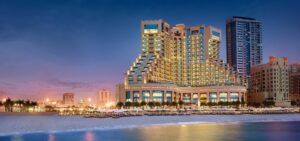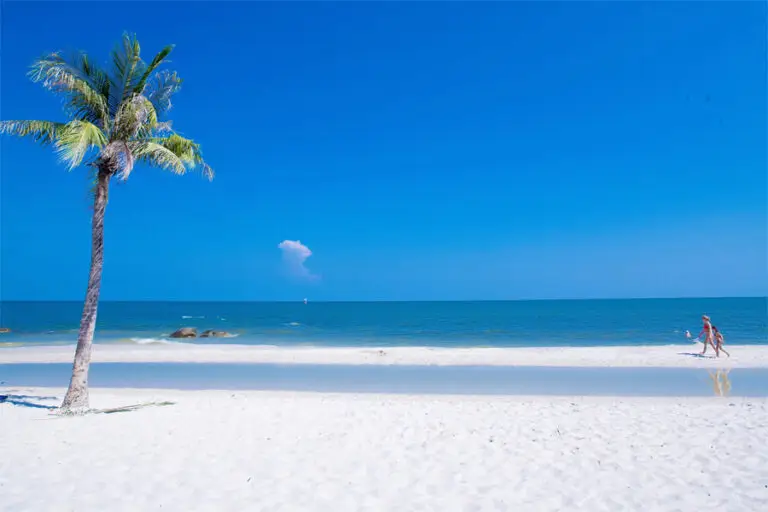PREFER TO WAtch this article as a video ?
Philippines Entry Requirements: A Comprehensive Guide
The Philippines, an archipelago of over 7,000 islands, is a sought-after destination for travelers worldwide. Its pristine beaches, rich cultural heritage, and warm hospitality make it a must-visit. However, like any other country, the Philippines has specific entry requirements for foreign visitors. This guide aims to provide a detailed overview of what you need to know before embarking on your journey.

- Passport Validity:
Your passport is the most crucial document when traveling internationally. For entry into the Philippines, it’s imperative that your passport meets the necessary validity requirements to ensure a hassle-free experience at immigration checkpoints.
-
Duration of Validity: The Philippines mandates that all foreign visitors have a passport that remains valid for at least six months beyond their intended departure date from the country. This requirement is a standard practice in many countries to ensure travelers don’t face issues due to an expiring passport during their stay.
-
Physical Condition: Ensure that your passport is in good physical condition. Damaged passports, especially those with missing pages or compromised bio-data pages, can lead to complications or even denial of entry. It’s always a good idea to keep a photocopy or digital scan of your passport in a separate location in case of loss or theft.
-
-
Visa Requirements:
The Philippines has a generous visa policy, allowing many nationalities to experience its beauty without the need for pre-arrival visa arrangements.
-
Visa-free Entry: Nationals from over 150 countries, including most of the Americas, Europe, and parts of Asia, are granted visa-free entry. This privilege allows tourists to stay for up to 30 days without obtaining a visa beforehand. However, the exact duration and conditions can vary based on bilateral agreements between the Philippines and individual countries. For instance, Brazilian and Israeli nationals are given a more extended 59-day visa-free stay due to reciprocal agreements.
-
Documentation: Even if you’re from a visa-free country, ensure you have return or onward travel tickets and can demonstrate proof of sufficient funds for your stay. Immigration officers might request to see these upon arrival.
-
-
Visa Extensions: If you wish to stay longer than your visa-free period, you can apply for a visa extension at the Bureau of Immigration in the Philippines. Extensions are typically granted in increments of 29 days.
-
Application Process: If your journey in the Philippines beckons for more time, you can apply for a visa extension at any Bureau of Immigration (BOI) office. These offices are strategically located in major cities and popular tourist destinations, ensuring easy accessibility for travelers.
-
Duration and Fees: While the standard extension is for 29 days, multiple extensions can be sought, allowing tourists to stay for several months. Each extension comes with a fee, which varies based on the duration and number of times an extension has been availed. It’s advisable to check the BOI’s official website for the most up-to-date fee structure.
-
Documentation: Along with the application form, you’ll need to provide a copy of your passport’s bio page, the page with your latest arrival stamp, and proof of legal stay (if you’ve already extended your visa). Some offices might also request passport-sized photos.
-
-
Tourist Visas:
While many nationalities enjoy visa-free entry, some travelers either need a visa or choose to obtain one for a more extended stay right from the outset.
-
Application Process: Tourist visas can be secured from a Philippine consulate or embassy in your home country. The process typically involves filling out an application form, providing necessary documents (like bank statements, travel itinerary, and hotel bookings), and paying a fee.
-
Validity: The standard tourist visa is valid for 59 days. However, if your adventures in the Philippines demand more time, this visa can be extended in the country through the BOI, just like the visa-free entry.
-
-
Proof of Onward Travel:
Ensuring travelers have the means and intention to leave the country is a standard practice in many nations, and the Philippines is no exception.
-
Requirement: Upon arrival, immigration officers might request to see proof of your onward or return journey. This can be in the form of a flight, ferry, or bus ticket indicating your departure from the Philippines.
-
Digital Copies: While having a physical copy of your ticket is ideal, a digital version on your smartphone or tablet is often acceptable. However, ensure you can access it without an internet connection, as Wi-Fi might not always be available at immigration checkpoints.
-
Potential Issues: Travelers without proof of onward travel might face complications, ranging from a thorough questioning to, in rare cases, denial of entry. To avoid any disruptions to your travel plans, it’s recommended to have this proof readily available.
-
-
Health Requirements: Depending on global health situations, there might be specific vaccination or health check requirements. For instance, during the COVID-19 pandemic, travelers had to present a negative RT-PCR test taken within a certain timeframe before arrival.
-
Quarantine Protocols: Again, based on global health situations, there might be mandatory quarantine requirements for incoming travelers. It’s crucial to stay updated with the latest guidelines.
-
Customs Declaration: Upon arrival, travelers must fill out a customs declaration form. It’s essential to declare any items that are taxable or restricted.
Navigating the customs process is a crucial step upon entering the Philippines, ensuring that all items brought into the country comply with local regulations.
-
Declaration Form: Every traveler is provided with a customs declaration form, either during their flight or upon arrival. This form requires details about the traveler, their journey, and a comprehensive list of items they’re bringing into the country.
-
Items to Declare: While personal effects and items for personal use typically don’t need to be declared, certain goods might be taxable or even restricted. This includes items like electronics, luxury goods, large amounts of food, and commercial goods. If in doubt, it’s always better to declare an item than risk potential penalties.
-
Restricted and Prohibited Items: The Philippines has a list of items that are either restricted or entirely prohibited. This includes certain drugs, firearms, and items that might be harmful to the environment or public health. It’s crucial to familiarize oneself with this list before travel to avoid any complications.
-
-
Currency Restrictions: There’s a limit to the amount of currency you can bring into or take out of the Philippines. As of the last update, travelers must declare amounts exceeding 10,000 USD or its equivalent.
The Philippines, like many countries, has regulations in place to monitor large movements of money across its borders, aiding in the prevention of money laundering and other illicit activities.
-
Declaration Threshold: Travelers entering or leaving the Philippines with currency or monetary instruments (like traveler’s checks or money orders) exceeding 10,000 USD or its equivalent in any other currency must declare this to customs officials. This includes both foreign and Philippine currency.
-
Procedure: If you’re carrying an amount above the threshold, you’ll need to fill out a declaration form provided by customs officials. This form requires details about the source of the funds and the purpose of bringing them into or taking them out of the country.
-
Penalties: Failure to declare amounts exceeding the stipulated limit can result in the confiscation of the excess amount and potential legal consequences. It’s essential to be transparent and adhere to these regulations to ensure a hassle-free travel experience.
-
-
Special Permits:
The Philippines is home to a myriad of natural wonders and indigenous communities, many of which are protected by the government to preserve their unique ecosystems and cultural heritage. If you’re an adventurer or researcher keen on exploring these protected areas, be aware that you’ll need special permits.
-
Indigenous Territories: The Philippines respects the rights and territories of its indigenous peoples. Before entering their ancestral domains, visitors must obtain a Prior Informed Consent (PIC) from the community and the National Commission on Indigenous Peoples (NCIP). This ensures that the rights of indigenous communities are upheld and that visitors are aware of the cultural sensitivities and protocols to follow.
-
Marine Sanctuaries: The Philippines boasts some of the world’s most diverse marine life. To protect these delicate ecosystems, certain marine sanctuaries require permits for activities like diving or research. These permits often come with guidelines to ensure minimal disturbance to marine life.
-
-
Work and Business Visas:
The Philippines is a growing economy with numerous opportunities for foreign professionals and entrepreneurs. However, to legally work or do business in the country, the appropriate visa is essential.
-
9(G) Pre-Arranged Employment Visa: This is for foreigners who have been hired by a company based in the Philippines. The employer typically acts as a sponsor and assists with the visa application, which includes submitting various documents like a contract of employment and a Department of Labor and Employment (DOLE) clearance.
-
9(D) Treaty Trader’s Visa: This is for foreigners doing business in the Philippines under a country that has a bilateral trade agreement with the Philippines.
-
-
Student Visas:
The Philippines is becoming an increasingly popular destination for international students due to its English-speaking institutions and affordable tuition fees.
- Application Process: To obtain a student visa, one must first be accepted into a recognized educational institution in the Philippines. The school will then coordinate with the Bureau of Immigration and provide the necessary documents, such as the Notice of Acceptance and medical clearances. The student will also need to prove they can financially support their studies and stay in the country.
- Residency and Retirement Visas:
For those who have fallen in love with the Philippines and wish to make it their long-term or retirement home, there are several visa options available.
-
Special Resident Retiree’s Visa (SRRV): This visa is designed for foreign retirees. Applicants must be at least 35 years old and meet the financial requirements, which vary depending on age and pension status. In return, holders of the SRRV enjoy benefits like multiple-entry privileges and exemptions from customs duties and taxes for the importation of personal goods.
-
Quota Visa: This is a rare visa granted to those of exceptional qualifications, such as investors or individuals with notable skills or expertise. It leads to permanent residency but has a limited number of slots per year.
-
Marriage Visa (13A): Foreigners married to Filipino citizens can apply for this visa, leading to permanent residency. It requires proof of marriage and other documentation.
-
-
Safety and Security:
The Philippines, with its warm hospitality and breathtaking landscapes, is a favorite destination for many travelers. However, as with any country, it’s essential to prioritize safety and stay informed about potential risks.
-
Travel Advisories: Before traveling, it’s wise to check for any travel advisories issued by your home country’s embassy or consulate in the Philippines. These advisories provide up-to-date information about areas that might be best avoided due to reasons such as political unrest, terrorism threats, or ongoing military operations. For instance, certain parts of Mindanao have historically been flagged for potential security concerns.
-
Natural Disasters: The Philippines is located in the Pacific Ring of Fire, making it susceptible to earthquakes and volcanic activity. Additionally, being an archipelago, it faces several typhoons each year. It’s advisable to monitor local news and weather forecasts, especially if you plan to visit during the typhoon season, which typically runs from June to November.
-
Personal Safety: While most tourist areas are safe, it’s always a good practice to be cautious. Avoid displaying excessive wealth, be wary of pickpockets in crowded places, and avoid poorly lit areas at night. It’s also recommended to use registered taxis or reputable ride-sharing services.
-
-
Cultural Sensitivities:
The Philippines boasts a rich tapestry of history, culture, and traditions. As visitors, it’s essential to approach these with respect and understanding.
-
Religious Etiquette: Being predominantly Catholic, many Filipinos attend church services, especially on Sundays. When visiting churches or attending religious ceremonies, dress modestly. For women, this might mean wearing dresses or skirts that cover the knees and tops that cover the shoulders. For men, shorts or sleeveless shirts might be frowned upon. It’s also common courtesy to remain silent during masses or prayers.
-
Local Customs: Filipinos are known for their hospitality and often greet guests with a smile. A common gesture of respect, especially towards elders, is the “mano,” where one takes the elder’s hand and places it gently on their forehead. While not expected from foreigners, it’s a gesture that’s deeply appreciated.
-
Public Behavior: Public displays of affection, such as kissing, might be considered inappropriate, especially in rural areas. It’s also polite to ask for permission before taking photos of people, particularly in indigenous communities.
-
Festivals and Celebrations: The Philippines is home to numerous festivals, each with its own set of traditions. If you’re fortunate enough to witness or participate in one, it’s essential to respect local customs. For instance, during Holy Week, many communities observe solemn processions and rituals. Participating or observing these events requires silence and reverence.
-
Conclusion:
The Philippines is a diverse and vibrant country with much to offer. By ensuring you meet all entry requirements and stay informed about any changes, you can ensure a smooth and enjoyable trip. Always consult the official website of the Department of Foreign Affairs or the nearest Philippine consulate or embassy for the most up-to-date information.









